This post may contain affiliate links. Please read our disclosure policy.
Create a zesty, flavorful small batch of pickled onions with our easy recipe, ideal for enhancing burgers, hot dogs, or salads. This perfect blend of simplicity and tang can be whipped up using just a few common pantry ingredients.
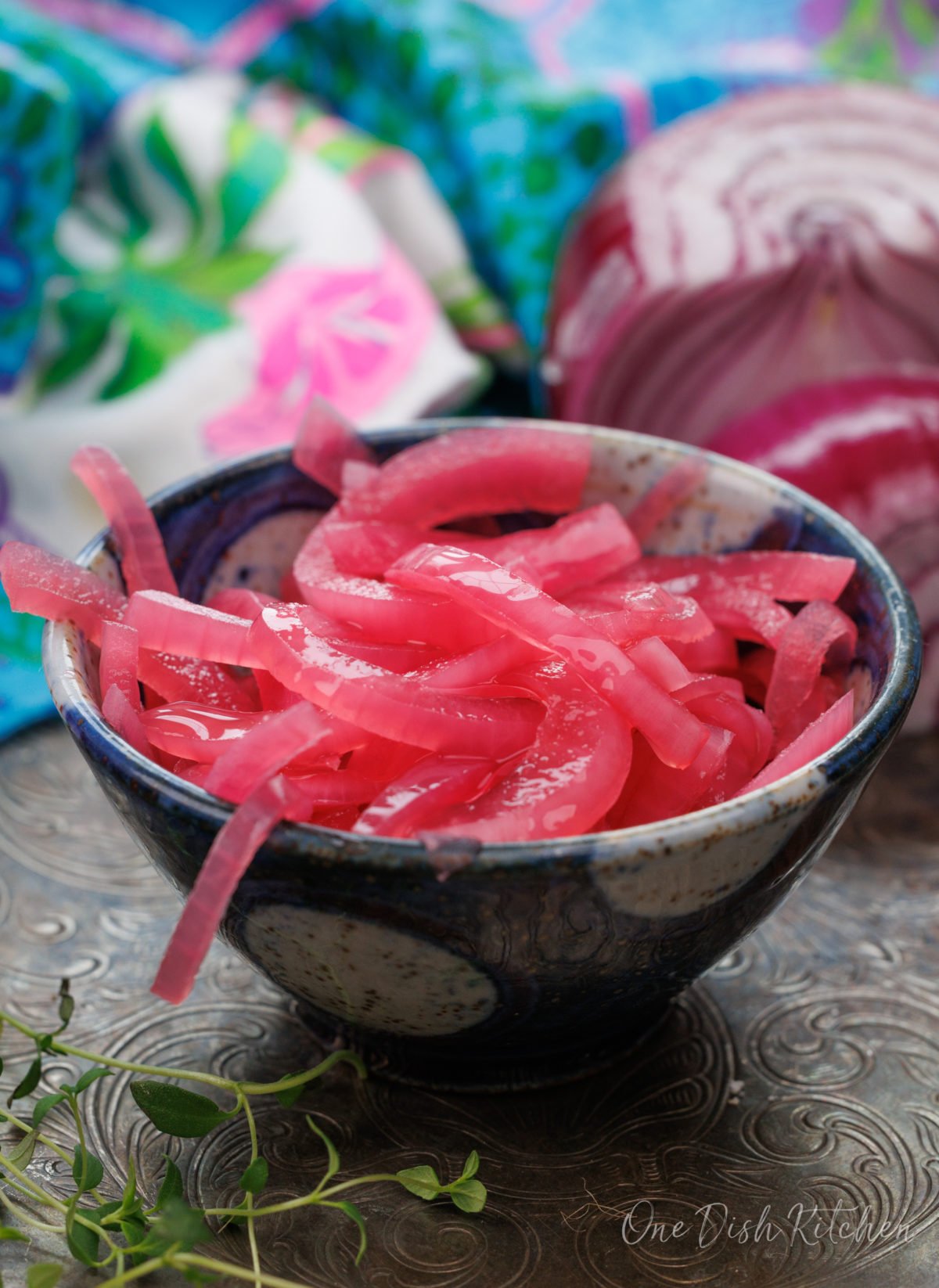
Pickled onions are remarkably adaptable and add a delightful tang to various dishes. Enjoy their zesty flavor on creamy avocado toast, or mix them into beef tacos or potato salad for an extra kick. They’re fantastic on a burger, and a must-try topping for enchiladas, chicken fajitas, and nachos. Enhance a simple bowl of rice with their punchy taste, or elevate a smoked salmon platter with their vibrant presence. The possibilities are endless.
Why You’ll Love This Pickled Onions Recipe
- Quick and Easy Preparation: This recipe calls for simple ingredients and has a speedy prep process, making the pickled onions ready in under an hour!
- Reduces Food Waste: It’s a great solution for using leftover onions, preventing them from going unused. Pickling not only produces a delicious condiment but also extends the onions’ lifespan, so you can enjoy them longer. It’s an effective way to maximize your produce and minimize waste.
- Adds Zest to Meals: These pickled onions bring a bright, tangy flavor to various dishes, enhancing their taste.
- Easily Scalable Recipe: The recipe is ideal for a small onion, but if you’re looking to make more, just double the ingredients. It’s perfect for scaling up to meet your needs.
What Are Pickled Onions?
Pickled onions are onions marinated in a blend of vinegar, salt, sugar or honey, and assorted spices. This method softens the onions, infusing them with a tangy, sweet, and lively taste that enhances a variety of dishes. Not only are they flavorful, but pickled onions also last longer, helping you enjoy them over time and reduce food waste.
Ingredients
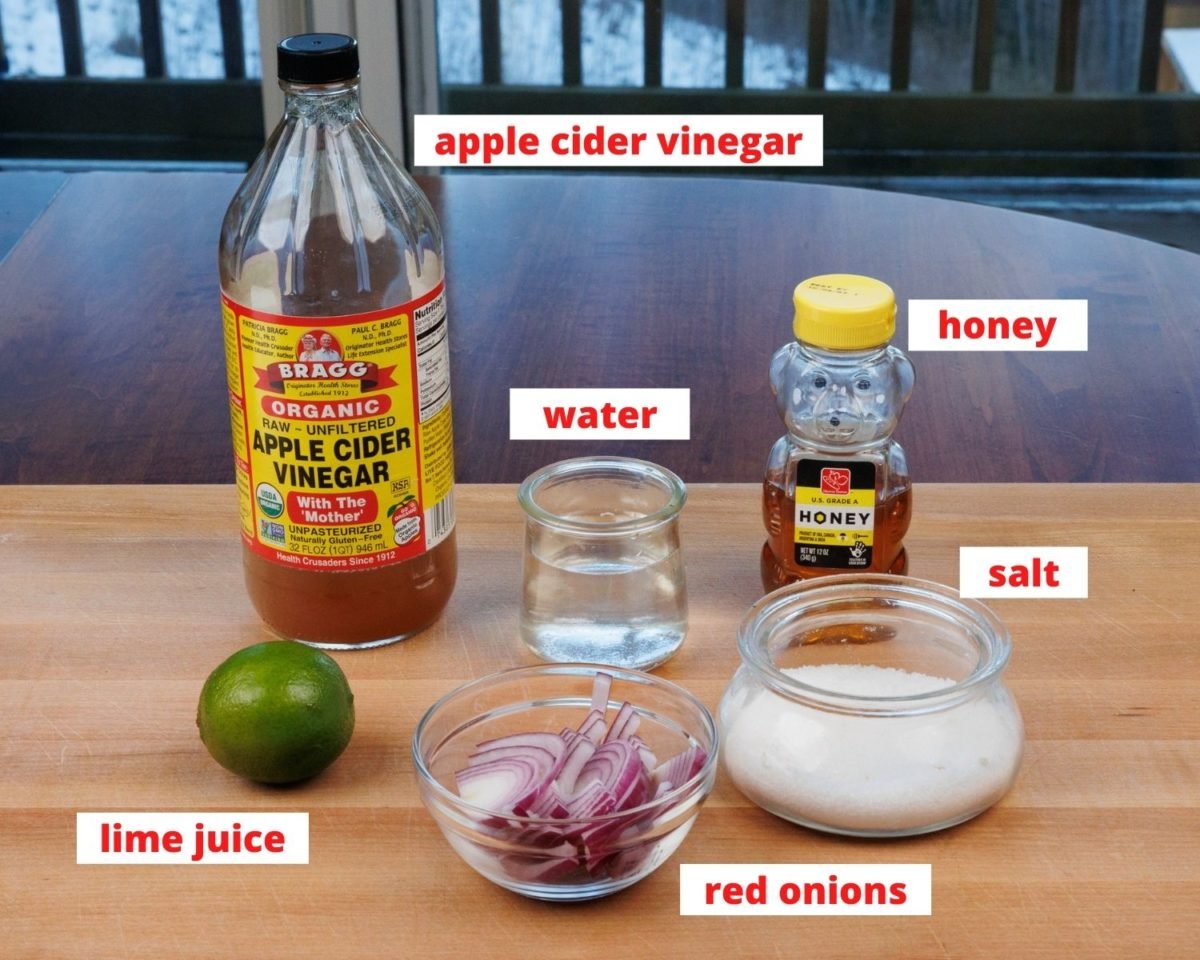
- Red Onion: This recipe uses one small red onion (about 3 ounces/86 grams), sliced into 1/4-inch thick half moons. While white or yellow onions are fine substitutes, red onions offer a beautiful color.
- Vinegar: Apple cider vinegar is preferred for its slightly fruity taste, but rice vinegar or white wine vinegar work too. Avoid balsamic vinegar for this recipe.
- Lime Juice: Add 2 tablespoons, equivalent to the juice from one medium-sized lime. Bottled lime juice is also suitable, offering a fresh citrus note.
- Honey: Honey provides a light, fruity sweetness. For a vegan alternative, use maple syrup or sugar.
- Salt: Essential for pickling, use 1/4 teaspoon of kosher salt or 1/8 teaspoon of regular table salt.
- Water: Helps to balance the vinegar’s tartness, making the pickling mixture milder.
Pro Tip: Customize your pickled onion with fresh herbs like thyme or rosemary, an orange peel, a garlic clove, or a bay leaf. Remember, the longer these additions sit in the mixture, the more pronounced their flavors will be. Remove them once the onions reach your desired flavor profile.
Recipe Variations
- Asian-Inspired Pickled Onions: Add rice vinegar, soy sauce, and some sliced ginger to the vinegar solution. This will give the pickled onions an Asian-inspired flavor profile.
- Mexican-Style Pickled Onions: Toss in some jalapeno slices, a hint of oregano, and cilantro to give your pickled onions a Mexican flair.
- Sweet and Spicy Pickled Onions: Add honey and a dash of crushed red pepper flakes to create a balance of sweet and spicy flavors.
- Mediterranean Pickled Onions: Incorporate a couple of bay leaves, some thyme, and a clove of garlic into your pickling mixture to give your onions a Mediterranean touch.
Notes:
Use your favorite herbs and spices. There are endless possibilities when it comes to herbs and spices, so feel free to experiment with your favorites.
Don’t be afraid to adjust the amounts. If you like your quick pickled onions more flavorful, add more herbs or spices. If you like them more sweet, add more honey or maple syrup.
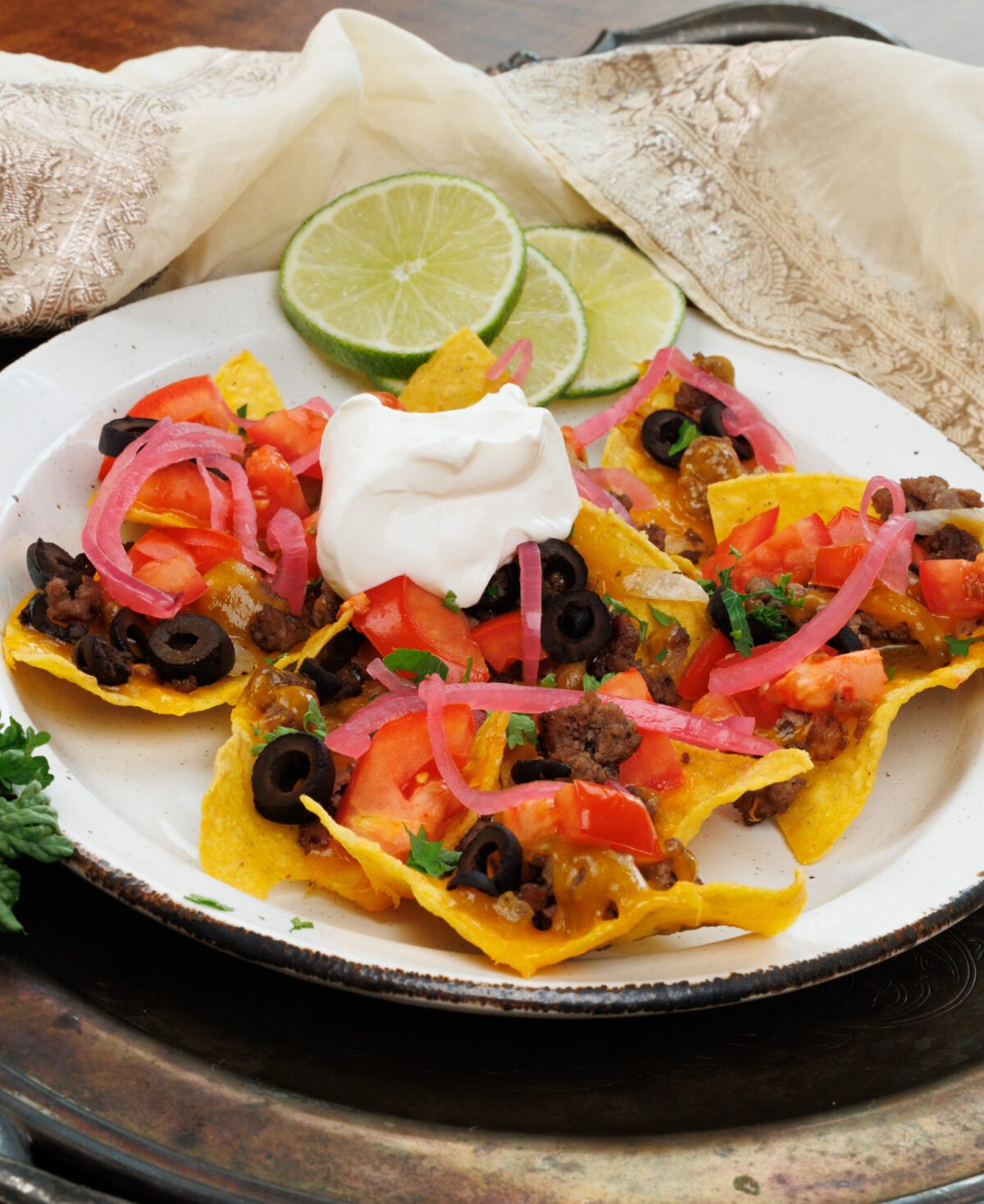
How To Make Pickled Onions
These step-by-step photos and instructions help you visualize how to pickle an onion. See the recipe box below for ingredient amounts and full recipe instructions.
- Prepare the Onion: Peel a small red onion and slice it in half from top to bottom, cutting through the stem. Place the halves flat-side down on a cutting board and thinly slice them into 1/4-inch pieces. Place these slices in a small mason jar – a 2-cup size is ideal. Avoid using metal or plastic containers as metal can react with vinegar, and plastic may absorb flavors.
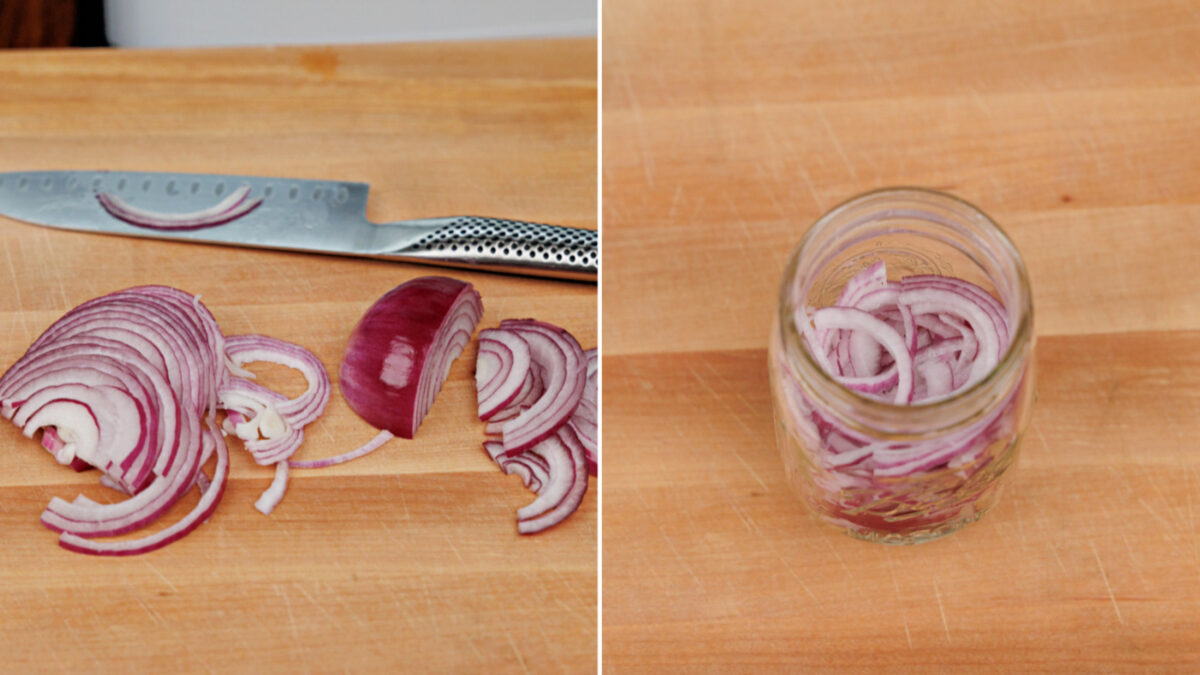
- Make the Pickling Liquid: In a small saucepan, combine water, vinegar, lime juice, honey, and salt. Heat the mixture over medium-high heat, stirring occasionally. Once it simmers and the honey dissolves completely, remove it from the heat.
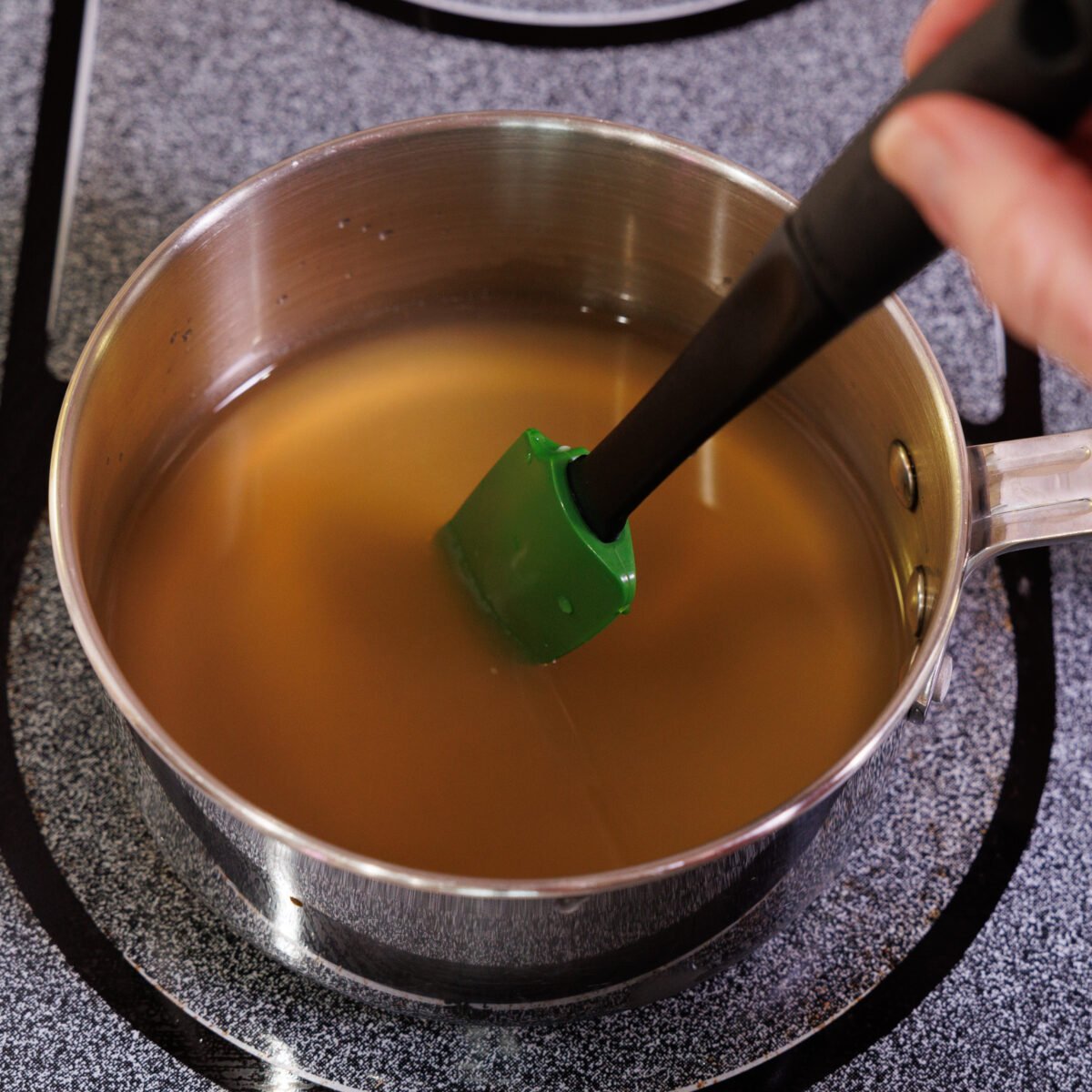
- Pickle the Onions: Let the brine cool slightly. Then, carefully pour it over the onions in the jar, doing it gradually to avoid cracking the jar. Use a spoon to gently press and move the onions around, ensuring they are fully submerged in the liquid.
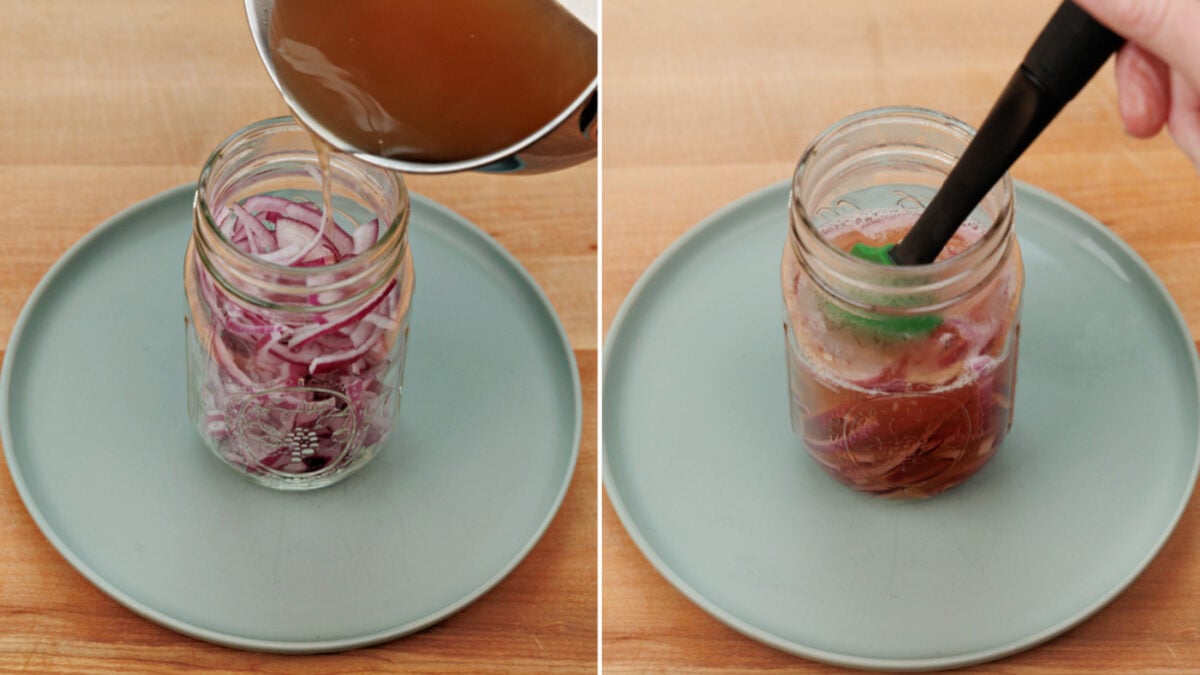
- Let It Sit and Store: Cover the jar and let the onions sit at room temperature for 30 minutes. After that, store them in the refrigerator. This recipe makes about 2/3 cup (70 grams) of pickled red onions.
Pro Tip: For the best flavor, keep your pickled onions sealed in an airtight jar in the fridge. They improve in taste after a few days!
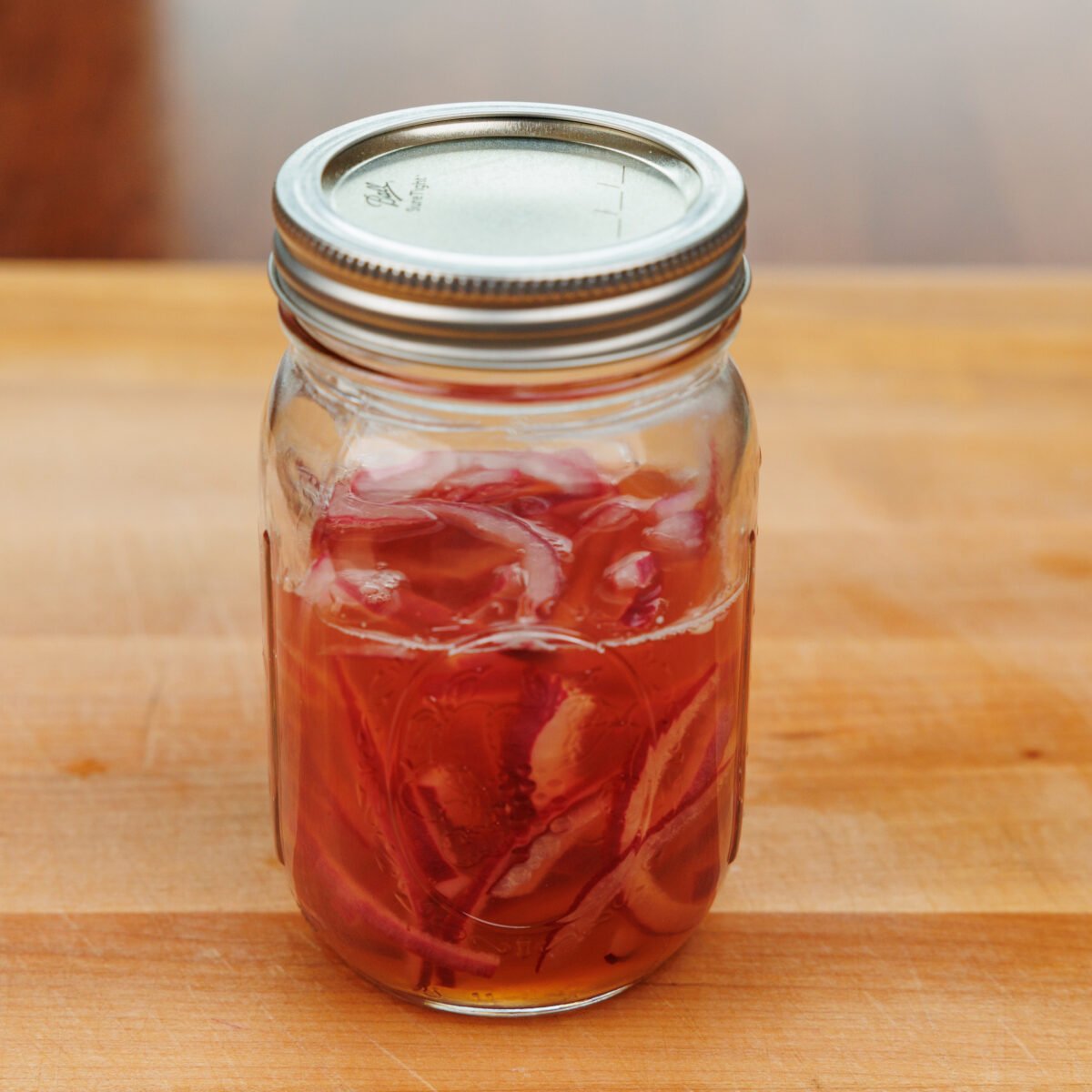
Expert Tips
- Choose the Right Vinegar: The type of vinegar used in the pickling brine can impact the flavor of your pickled onions. While apple cider vinegar or white vinegar is a common choice, you can also experiment with red wine vinegar or even rice vinegar for unique taste variations. Just be sure to avoid balsamic or malt vinegar, as their strong flavors can overpower the onions.
- Customize the Flavor: Feel free to get creative with your pickling spices and seasonings. This is a basic pickled onions recipe so consider including other additions. Classic choices include peppercorns, mustard seeds, and bay leaves, but you can also add red pepper flakes for heat, fennel seeds for an anise flavor, or a pinch of cumin for earthiness. Adjust the sugar and salt levels in the brine to suit your personal taste preferences, creating a pickled onion recipe that’s uniquely yours.
- Slice the onions thinly, but not too thinly: The pickling process often thins out the onions a little and the moisture from the brine makes them soft. I like to slice my onions to 1/4-inch thickness.
- Use the right-sized jar for pickling: Since we are not heat processing these onions, you do not need to use a canning jar. Any jar with a lid or even a glass storage container will work. I use a 2-cup (1-pint) mason jar.
- Clean and dry your jar well before using it: You don’t want to introduce bacteria to the onion pickling process.
Frequently Asked Questions
Properly stored, they can last up to 2 weeks in the fridge.
Some recipes call for soaking onions in water before peeling and slicing them for pickling. This draws moisture out of the onions and helps to soften them. I actually prefer not to soak my onions and pickle them straight from raw for that extra crunch.
Absolutely! Feel free to add veggies like cucumbers, carrots, cauliflower, or radishes.
Just be sure to cover the vegetables with enough liquid and follow the same storing instructions.
Either, I keep my onions in the brining liquid.
Yes, the ingredients in this recipe can be doubled if you’d like to make more.
Yes, sugar or maple syrup can be used as an alternative.
RELATED: Easy Game Day Recipes For One
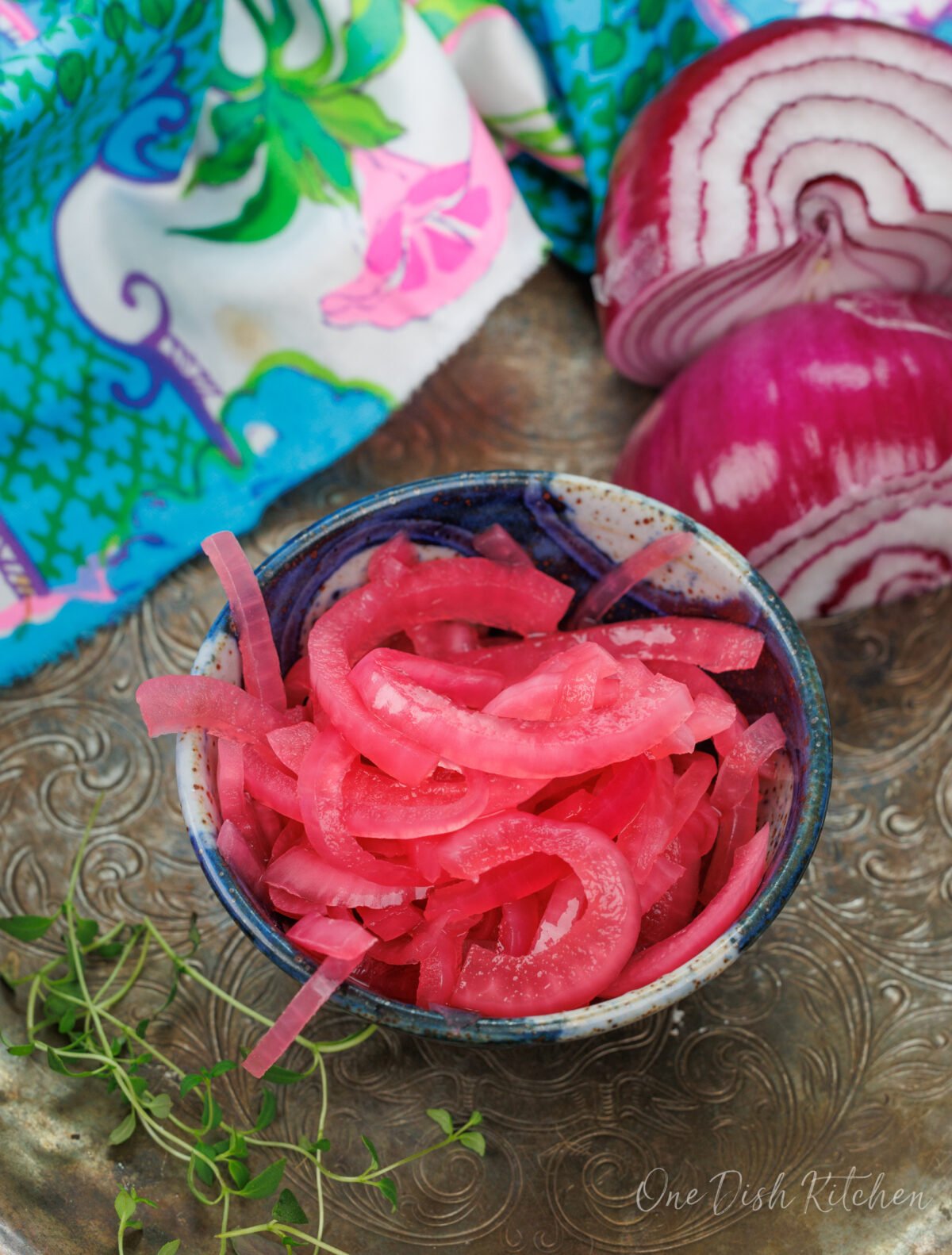
Ways To Use Leftover Ingredients
If you have any ingredients leftover from this recipe, check out our Leftover Ingredients Recipe Finder or you might like to consider using them in any of these single serving and small batch recipes:
This recipe for small batch pickled onion is easy to make and only requires a few ingredients. It is a great way to use up leftover onions, and it is also a healthy option. Pickled onions can be used on a variety of dishes, so get creative and experiment with different flavors and ingredients.
If you’ve tried these quick pickled red onions or any recipe on One Dish Kitchen please let me know how you liked it by rating the recipe and telling me about it in the comment section below.
If you take a picture please tag us on Instagram (@onedishkitchen) we’d love to see it!
Small Batch Pickled Onion
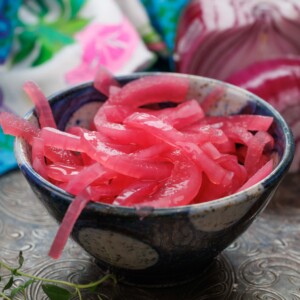
Equipment
Ingredients
- 1 small red onion (about 3-ounces sliced)
- ½ cup water
- ¼ cup apple cider vinegar
- 2 tablespoons lime juice
- 2 tablespoons honey
- ¼ teaspoon kosher salt
Instructions
- Prepare the Onion: Peel a small red onion and slice it in half from top to bottom, cutting through the stem. Place the halves flat-side down on a cutting board and thinly slice them into 1/4-inch pieces. Place these slices in a small mason jar – a 2-cup size is ideal. Avoid using metal or plastic containers as metal can react with vinegar, and plastic may absorb flavors.
- Make the Pickling Liquid: In a small saucepan, combine water, vinegar, lime juice, honey, and salt. Heat the mixture over medium-high heat, stirring occasionally. Once it simmers and the honey dissolves completely, remove it from the heat.
- Pickle the Onions: Let the brine cool slightly. Then, carefully pour it over the onions in the jar, doing it gradually to avoid cracking the jar. Use a spoon to gently press and move the onions around, ensuring they are fully submerged in the liquid.
- Let It Sit and Store: Cover the jar and let the onions sit at room temperature for 30 minutes. After that, store them in the refrigerator. This recipe makes about 2/3 cup (70 grams) of pickled red onions.Pro Tip: For the best flavor, keep your pickled onions sealed in an airtight jar in the fridge. They improve in taste after a few days!
Notes
- Choose the Right Vinegar: The type of vinegar used in the pickling brine can impact the flavor of your pickled onions. While apple cider vinegar or white vinegar is a common choice, you can also experiment with red wine vinegar or even rice vinegar for unique taste variations. Just be sure to avoid balsamic or malt vinegar, as their strong flavors can overpower the onions.
- Customize the Flavor: Feel free to get creative with your pickling spices and seasonings. This is a basic pickled onions recipe so consider including other additions. Classic choices include peppercorns, mustard seeds, and bay leaves, but you can also add red pepper flakes for heat, fennel seeds for an anise flavor, or a pinch of cumin for earthiness. Adjust the sugar and salt levels in the brine to suit your personal taste preferences, creating a pickled onion recipe that’s uniquely yours.
- Slice the onions thinly, but not too thinly: The pickling process often thins out the onions a little and the moisture from the brine makes them soft. I like to slice my onions to 1/4-inch thickness.
- Use the right-sized jar for pickling: Since we are not heat processing these onions, you do not need to use a canning jar. Any jar with a lid or even a glass storage container will work. I use a 2-cup (1-pint) mason jar.
- Clean and dry your jar well before using it: You don’t want to introduce bacteria to the onion pickling process.
Nutrition
The information shown is an estimate provided by an online nutrition calculator. It should not be considered a substitute for a professional nutritionist’s advice.
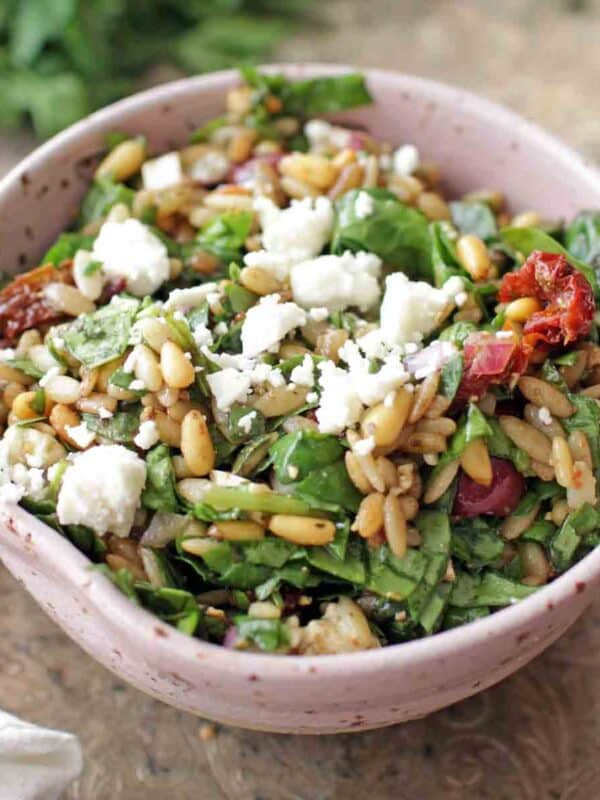
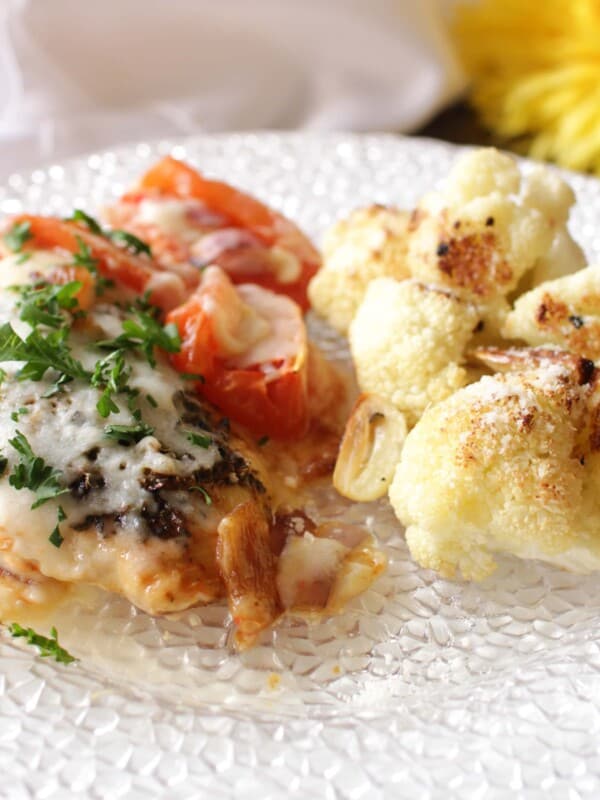
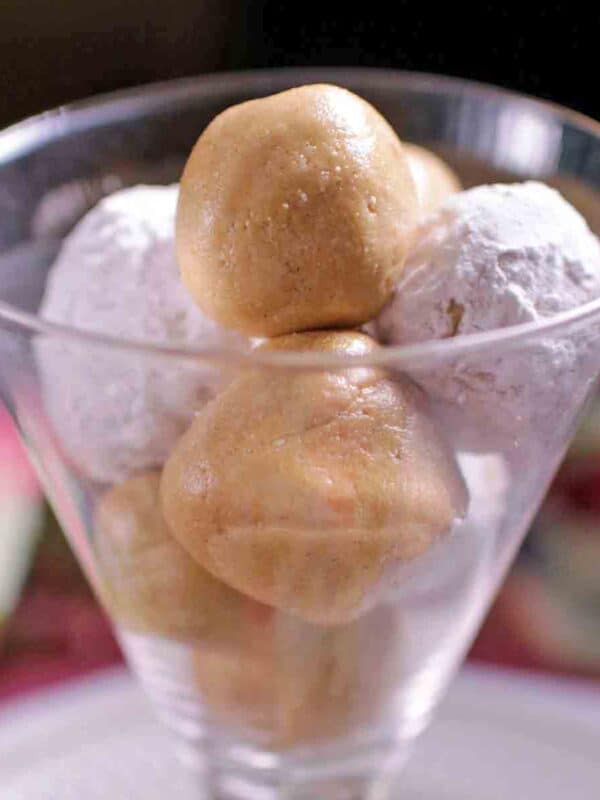
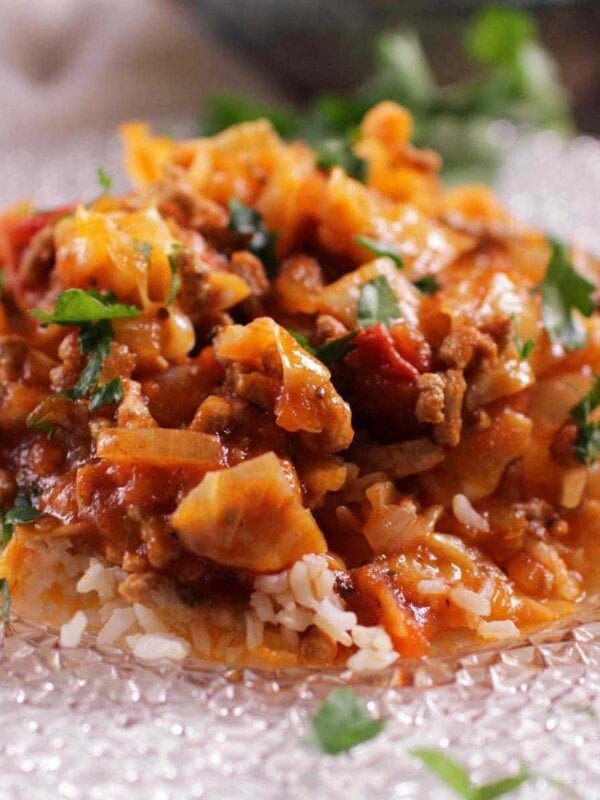
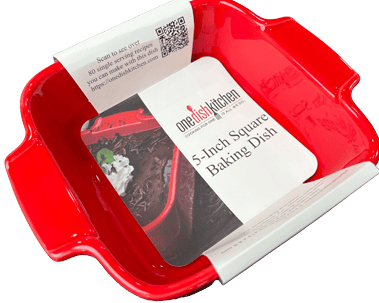









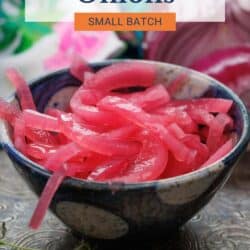
Love it! Two questions, can you use this same brine to pickle other veggies? Also can you use lemon instead of lime juice? Thanks Joanie 🙂
Yes to both questions. Lemon juice can be used instead of lime and you can use the brine to pickle other vegetables like cucumbers, carrots, cauliflower, and radishes.
I’m wondering if this recipe can be canned?
Would love to send some to my sister.
No. This recipe is a “refrigerator pickled onions” recipe and is not designed for canning in a water bath, and has not been tested for canning safety. I would recommend using a recipe specifically designed for canning instead.
These pickled onions are delicious.
I followed the recipe exactly as written.
Love the crunch and the liquid used is perfect
not too harsh.
My forever recipe.
Thank you Joanie 👍
I made these and LOVE them. Need to make more but was wondering if I can use the brine leftover from the first batch to make the second batch. Thoughts?
Yes, but I would recommend only using the brine one more time. Bring the brine to a boil again before using. The flavors will likely be diluted and you’ll have less liquid to work with. Either use fewer onions for your next batch or add additional vinegar, honey, and water.
Great recipe.
Delicious. Great on hot dogs and hamburgers. Salads and sandwiches too!